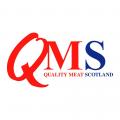
Spring calving will go on despite the turmoil around us! In advance of another calving rolling around, preparation is key. This winter, many farms are still suffering the trouble of respiratory disease, the origin of which may even have started in spring 2020.
With health and hygiene in mind, calving preparation should involve a review of 2020 performance. Those with good record keeping or Beef Efficiency Scheme members may have details of assisted calvings, number of calves treated for navel/ joint infections, scour or respiratory disease and number of calves that required colostral supplementation. Within a Herd Health Plan, I tend to set intervention points, and this triggers a change to herd management to try and reduce disease challenge.
If we look at some of these individually it may be possible to identify preventable losses:
Assisted calvings
Calves born with any intervention at all, such as a light pull, are twice as likely not to receive adequate colostrum if left to their own devices. This increases disease risk markedly and ability to thrive later in life. Calving ease is the Holy Grail for calf survival and this relates to not only appropriate bull selection but adequate heifer size.
Calving ease is closely related to risk of subsequent culling, but also promptness of returning to cyclicity and calving interval. This ensures we have the maximum number of calves on the ground at the earliest point in the calving period, maximising collective weaning weight. Appropriate bulls should be sought for both heifers and second calvers being mindful that it is often the third calf before a cow is at her mature body weight.
Calves treated for scour
This may vary from a calf requiring oral fluids right through to veterinary attention and intravenous fluids. Good hygiene is essential as cows will carry most of the viral causes of scour as well as E.Coli and Cryptosporidium from the environment. Many infections begin with oral ingestion of a pathogen, so dirty teats are often implicated as a cause of scour.
Stocking rates are important to comply with and it is often worth revisiting the maximum number a shed should be safely stocked at. A good rule of thumb is 1m2 per 100kg of cow/ calf. So, your average 750kg cow + 50kg calf should have 8m2 of lying space and this does not account for feeding space. Availability of clean bedding in loose yards can help this and, in addition, calf creeps within a pen of cows and calves will allow a clean space for calves to lie in away from cow traffic.
Ensuring adequate colostrum dramatically reduces the chance of scour and is essential if a scour vaccine has been given to the dam prior to calving to ensure the relevant antibodies are present for the calf.
Calves requiring supplementary colostrum-
An intervention point should be set for when a calf should be supplemented. Six hours is often discussed but, in reality, if the calf has not taken two litres+ by four hours, it should be supplemented. There has been much work done to demonstrate the failure to receive adequate antibodies from passive transfer not only increases disease risk in the short term, but is also likely to avoid some “gene-turn-on” known as epi-genetics. Therefore, some of these calves will not grow to their breeding potential, thrive and, in the case of breeding females, are more likely to be culled earlier in life. If more calves are struggling with vigour at birth review calving ease, bull selection, dry cow diets and mineral status. Less than 5-10% of calves should require colostral supplementation. Particular attention should be given to calves from heifers and cows producing twins.
With colostral replacement, the Dams’ milk is always the preference and offers more nutritional value than any alternatives by some distance. A handling system that allows a cow to be held safely for stripping colostrum and milk is a very worthwhile investment.
Checking to see if calves have received adequate passive transfer is also a sensible starting point, especially if disease rates are high. A blood sample taken from the calf between 24 hours and 5 days of age will confirm if passive transfer was good, adequate or unsuccessful. This can be useful if doing a batch, 5-6 at a time, or heifer calves and can be done in-house at many vet practices with quick results. If more than 50% of calves tested are not receiving adequate colostrum, risk to the group is high as even calves that have been successful are exposed to a far higher disease challenge than those that did not.
We should always be aiming to achieve better results with even the most efficient units looking for improvements year-on-year.
Good luck with calving 2021 folks, at least you won’t be missing out on a night in the pub…



Comments: Our rules
We want our comments to be a lively and valuable part of our community - a place where readers can debate and engage with the most important local issues. The ability to comment on our stories is a privilege, not a right, however, and that privilege may be withdrawn if it is abused or misused.
Please report any comments that break our rules.
Read the rules here